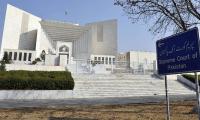Tampa, Florida, is a long way from South Asia, but in mid-2011 I was there to attend a conference on Pakistan at the headquarters of the US Central Command as a guest of General David Petraeus, the US commander in Afghanistan. I was to review Pakistan’s role in supporting the Taliban movement in Afghanistan.
Only 25 years ago the United States had fought a war against the Soviets in Afghanistan with Pakistan’s help. President Ronald Reagan enjoyed Pakistan’s support and won the war. Now, in the twenty-first century, America and Pakistan are on opposite sides in the Afghan civil war. It’s a lot harder to envision success.
In December 1979 the Soviets invaded Afghanistan. Gen Zia immediately turned to Saudi Arabia for help and assistance and dispatched General Akhtar, his ISI Chief, to Riyadh with an urgent message for the king: Zia wanted Saudi assistance to strengthen the mujahedeen, the anti-communist rebels in Afghanistan. According to Prince Turki, King Fahd agreed immediately, and the ISI and Turki’s General Intelligence Directorate (GID) began cooperating to aid the mujahedeen. In addition, the Saudi-Pakistani partnership would soon acquire another partner, the CIA. Gen Zia also turned to Pakistan’s other longtime ally, China, and China responded with arms and advisers.
Bill Casey, President Reagan’s CIA Chief, traveled repeatedly to Islamabad. On his first visit, he was shown a map of Afghanistan with a red triangle superimposed on it, pointing in the direction of the Indian Ocean, just three hundred miles from the Afghan-Pakistani border. This map was shown to many subsequent visitors. Pakistan was the real battlefield and Moscow’s real objective was access to the Indian Ocean and the Persian Gulf, the Pakistanis believed. Gen Zia and Gen Akhtar were determined to keep Moscow from getting a warm-water port on the Indian Ocean. As Casey’s deputy for operations in Afghanistan would later recount, Gen Zia and Gen Akhtar were believers. Without them, there would have been no Afghan war, and no Afghan victory.
The ISI set up training camps along the Durand Line, and Afghans began learning more sophisticated tactics and skills to help them wage jihad. The ISI included instructors from Pakistan’s own special forces, the Special Services Group (SSG), an elite fighting force within the army. Overall, the ISI trained at least 80,000 to 90,000 Afghans in its camps.
The Directorate General Inter-Services Intelligence (ISI) grew during Zia’s years. His handpicked choice for Director General in 1979 was a Pashtun, Akhtar Abdur Rahman, better known simply as General Akhtar. Akhtar was a gifted intelligence officer and knew the Afghan world. He developed close working ties to many of the Afghan mujahedeen leaders and organized them into political parties to give more legitimacy to their struggle. Akhtar also built strong ISI links to the CIA and the Saudis. He was the first Director General of the ISI that I met with.
Akhtar vastly expanded the size and strength of the service. According to one estimate, the ISI went from a staff of 2,000 in 1978 to 40,000 employees and a billion-dollar budget by 1988. It came to be seen in Pakistan as omnipotent, listening in on every phone call, planting informants in every village, city block, and public space. Politicians were on its payroll. As one of Gen Akhtar’s deputies would later say, “The ISI was and still is probably the most powerful and influential organization in the country,” he also remarked that Akhtar was “regarded with envy or fear,” even by his fellow officers.
The ISI took outside help, money, and arms for Afghanistan but was very careful to control how and when the various mujahedeen factions received those assets. The man who ran the operation for Gen Akhtar for much of the 1980s was Mohammad Yousaf, the chief of the ISI’s Afghan bureau. His two accounts of the war, Silent Soldier: The Man behind the Afghan Jehad and The Bear Trap: Afghanistan’s Untold Story, are the single best pieces on the war from the Pakistani perspective. He describes the pipeline for aid as follows: As soon as the arms arrived in Pakistan, the CIA’s responsibility ended. From then on it was our pipeline, our organization that moved, allocated, and distributed every bullet that the CIA procured.
From the earliest days of the Afghan war, Gen Zia and Gen Akhtar were planning for the next stage of the jihad, turning east toward India and Kashmir. The war against the Soviets was to be used as a means to help build the base for a Kashmiri insurgency. In other words, the Afghan war with the Soviets would also be a training ground to build the cadres for another jihad against India in Kashmir. Some of the American assistance that was earmarked for the Afghan jihad would be diverted to the Kashmiri project. A series of meetings took place between the ISI and Kashmiri militants from Indian-controlled Kashmir.
For security reasons, many of the meetings were held in Saudi Arabia. Gen Zia and Gen Akhtar were involved directly in the effort. Finally, in 1983 some Kashmiris began to receive training in the ISI’s Afghan camps. The ISI also reached out to other groups in Kashmir, including the Jammu Kashmir Liberation Front (JKLF), which had been founded in 1977 in Birmingham, England, by Kashmiris living in the United Kingdom. At first it was reluctant to take ISI help, but Gen Akhtar opened talks with the group in 1984, and by 1987 JKLF militants were attending the ISI training camps.
Gen Zia and Gen Akhtar also avidly supported another front in India, the Sikh independence movement, which wanted to create a Sikh state called Khalistan. Sikh grievances dated back to partition, when some Sikhs argued for a third state in South Asia for themselves. When their unrest peaked in the 1980s, Pakistan unsurprisingly became a patron of the Sikh independence movement. The Sikh rebellion came to a disastrous climax in June 1984, when activists took control of the Golden Temple in Amritsar. Indira Gandhi ordered the Indian army to regain control, but the Operation Blue Star turned into a fiasco, in part because the army underestimated the firepower of the militants. After a twenty-four-hour firefight, at least 500 soldiers, militants, and innocent victims were dead; some believe that the casualties were much higher. A low-level insurgency in the Punjab would continue for another decade. It would also take Mrs. Gandhi’s life.
The largest supply depot for the ISI’s war in Afghanistan was located just outside Rawalpindi at the Ojhri ammunition storage facility. On April 10, 1988, it was racked by a ripping series of massive explosions as 10,000 tons of arms and ammunition went up in smoke. More than 100 people died in the disaster, including five ISI officers. In 2012 two former Indian intelligence service officers told me that it was their agency that had sabotaged the facility, to punish Pakistan for helping the rebels in the Kashmiri and Sikh revolts.
On August 17, I988, Gen Zia and Gen Akhtar, who had by then been promoted to Chairman of the Joint Chiefs of Staff, and several other senior Pakistani generals as well as the U.S. ambassador to Pakistan, Arnold Raphel, were killed when their C-130 aircraft crashed shortly after takeoff. Immediately suspicions of foul play surfaced. No one ever claimed responsibility, but there are dozens of conspiracy theories about what happened and why.
Gen Akhtar’s ISI biographer, Yousaf, concluded that “the KGB or KHAD (its Afghan counterpart) had been involved but that the Americans were eager to see Zia and Akhtar killed now that the jihad was almost over.” John Gunther Dean, then the US ambassador to India, accused the Israeli secret service, Mossad, of killing Zia, possibly to stop the Pakistani bomb programme. In the most recent study, based on interviews with many of the Pakistani airforce officers who investigated the crash, Shuja Nawaz concludes that “many questions still remain” about why the plane crashed and why the investigation of the crash was so incomplete. Like much else in Pakistan’s history, this incident remains a mystery. One thing is certain: America does not kill its ambassadors or its allies' leaders.
This article is based on excerpts from the book ‘Avoiding Armageddon: America, India, and Pakistan to the Brink and Back’ by Bruce Riedel. The excerpts have been compiled/edited for the article by Qasim Khan.
Riedel is senior fellow and director of the Brookings Institution. He joined Brookings following a thirty-year career at the CIA. In 2009 President Obama made him chairman of a strategic review of American policy in Afghanistan and Pakistan.
Most SOEs such as PIA, may have a negative net worth too, based on their earnings potential
Fortunately, after a decade’s struggle with smog, Pakistani Punjab has understood the urgency of climate action
Recent COP29 summit underscored several emerging opportunities in global climate action
Rapid industrialisation of nations blurred once-clear lines between ‘developed’ and ‘developing’
Analysis of registered candidates reveals that many come from 15 districts affected by floods, poverty and poor...
US-Pakistan relations need to steer clear of the global power competition that dominates geopolitical landscape







